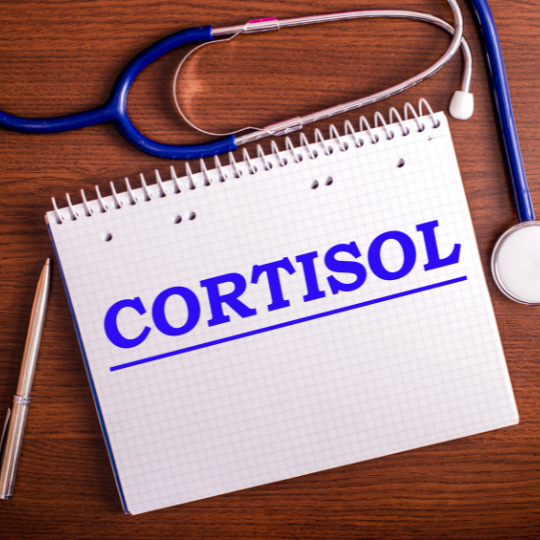In the quest for a longer and healthier life, we often turn to diet and exercise. But what if I told you that there’s another, more harmonious path to optimizing your healthspan? It involves something we encounter every day: sound. From the rhythm of our favorite tunes to the hum of nature, sound has a profound impact on our physical and mental well-being. In this article, we’ll delve into the fascinating science behind using sound to enhance your healthspan, touching on the relationship between sound’s BPM (beats per minute) and our exteroception and interoception, the connection to brain frequencies, the vibrational benefits of humming, brain-body entrainment, sound healing, and the remarkable benefits of playing a musical instrument on brain plasticity.
Sound’s Impact on Exteroception and Interoception
Before we dive into the science, let’s first explore the relationship between sound’s BPM and its influence on our exteroception and interoception. Exteroception refers to our awareness of the external environment, while interoception pertains to our internal bodily states. Higher BPM in music tends to trigger exteroception, making us more attuned to the world around us. Think of a fast-paced dance track; it’s hard not to notice your surroundings and respond to the beat.

Conversely, lower BPM sounds, such as slow and soothing melodies, induce interoception, helping us turn our focus inward. This relaxed state can be ideal for introspection, meditation, or simply unwinding. So, the next time you choose your playlist, consider the mood you’d like to set for your day.
Sound’s Connection to Brain Frequencies
Now, let’s explore the intriguing link between sound’s BPM and brain frequencies, measured in megahertz (MHz). Our brain operates within various frequency ranges, and they play a pivotal role in our cognitive functions. Higher BPM is linked to higher MHz frequencies, like alpha and beta, which are needed in the first part of the day to stay alert and focused. This aligns with the idea that a lively, energetic tune can help kickstart your morning.
On the other hand, lower BPM is associated with lower MHz frequencies, such as gamma, delta, and theta. These frequencies are ideal to be prevalent in the second part of the day, promoting relaxation, creativity, and deep sleep. So, consider adjusting your auditory environment to suit your daily activities and enhance your productivity.
The Vibrational Benefits of Humming
Humming might seem like a simple and pleasant pastime, but it’s backed by scientific research that proves its physiological benefits. Beyond a joyful pastime, humming has been found to positively impact our physiology in numerous ways. One of the notable effects of humming is the release of nitric oxide. Nitric oxide is a molecule with vasodilatory properties, which means it helps widen blood vessels, thereby improving blood flow and reducing blood pressure. This natural phenomenon suggests that humming might be an underrated tool for cardiovascular health.

Moreover, humming also activates the vagus nerve, which is associated with relaxation and reduced stress. It stimulates the release of endorphins, your body’s natural feel-good chemicals, promoting an overall sense of well-being. So, don’t underestimate the power of humming when it comes to your healthspan.
Brain-Body Entrainment with Binaural Beats and.. Noise
Binaural beats are a fascinating tool that leverages the power of sound to entrain our brainwaves and promote specific mental states. By listening to two slightly different frequencies in each ear, our brain perceives a third, “binaural,” beat that syncs with the desired frequency. For instance, listening to a 300 Hz tone in one ear and a 310 Hz tone in the other ear will result in a 10 Hz binaural beat, corresponding to alpha brainwave frequencies.
This brainwave entrainment can help induce relaxation, focus, or even promote better sleep. Moreover, white, brown, or pink noise can be used for sound masking and relaxation. For example, white noise helps drown out distractions, making it easier to concentrate. This technique can be a powerful addition to your healthspan toolkit.
Benefits of Sound Healing
Sound healing is an ancient practice that involves using various sound frequencies, like singing bowls, gongs, and tuning forks, to induce therapeutic effects. Scientific studies have shown that sound healing can reduce stress, anxiety, and depression, and even help manage chronic pain. It works by entraining the brain to specific frequencies, promoting relaxation and balance.

One fascinating aspect of sound healing is the concept of resonance. Our bodies have natural resonant frequencies, and sound healing aims to harmonize these frequencies, promoting a state of equilibrium. So, if you’re looking for a non-invasive and holistic approach to enhance your healthspan, sound healing might be worth exploring.
Benefits of Playing a Musical Instrument
Playing a musical instrument isn’t just a delightful hobby; it’s also a remarkable exercise for your brain. Scientific research has shown that playing an instrument can significantly impact brain plasticity, which is the brain’s ability to adapt and change.
Musicians have been found to have enhanced cognitive skills, improved memory, and better multitasking abilities. Learning an instrument involves the coordination of multiple senses, fine motor skills, and the ability to read and interpret complex patterns, all of which exercise various regions of the brain. So, if you’ve ever considered picking up a musical instrument, now is the time to do so.

In Conclusion
Sound is a powerful yet often underestimated tool for optimizing your healthspan. By understanding the relationship between sound’s BPM and exteroception/interoception, the connection to brain frequencies, the vibrational benefits of humming, brain-body entrainment through binaural beats and noise, the wonders of sound healing, and the benefits of playing a musical instrument, you can harness the full potential of sound to improve your well-being. This is why we consider sound as one of the main levers of our holistic framework as part of the genetic and metabolic optimization approach.
So, the next time you put on your favorite song, hum a tune, or pick up your guitar, know that you’re not just enjoying a pleasurable experience; you’re taking steps to ensure a harmonious and healthy future. Make the most of this scientifically proven, sound-inspired journey towards a longer and healthier life.










